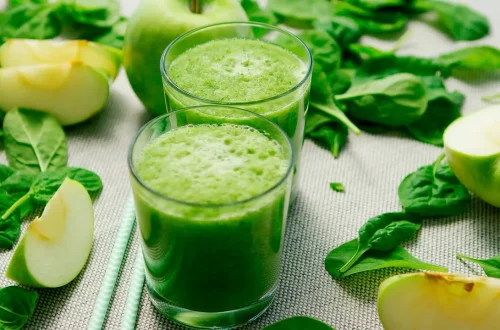
Nail Polish vs Gel: Which One is Right for Your Nails?
Nail care and beautification have become a significant part of personal grooming for many people. With the rise of social media, showcasing perfectly polished nails has turned into an essential aspect of self-expression. Among the various options available, nail polish and gel have emerged as two of the most popular choices for achieving beautiful nails. Each has its unique characteristics, benefits, and drawbacks that cater to different preferences and lifestyles.
Understanding the fundamental differences between these two types of nail applications can help individuals make informed decisions about which one best suits their needs. Factors such as durability, application techniques, removal processes, and overall nail health play crucial roles in this decision-making process. As you explore the world of nail care, you may find that your choice between traditional nail polish and gel polish is influenced by various personal and practical considerations.
This guide aims to delve into the distinctive features of nail polish and gel, providing insights that will empower you to make the best choice for your nails. Whether you’re seeking a quick at-home manicure or a long-lasting salon treatment, knowing the pros and cons of each option will help you achieve your desired nail aesthetic while maintaining nail health.
Understanding Nail Polish: The Classic Choice
Nail polish, or traditional lacquer, has been a staple in the beauty industry for decades. It’s favored for its wide range of colors, finishes, and easy application. The first and most significant advantage of nail polish is its versatility. Available in countless shades and textures—from glossy to matte, shimmer to glitter—this option allows for endless creativity and personal expression.
Applying nail polish is a straightforward process. It typically involves a base coat to protect the nails, followed by two coats of color and a top coat for added shine and longevity. The drying time for regular nail polish varies, but it generally takes about 10 to 15 minutes to set, depending on the thickness of the application and environmental conditions. This quick application process makes it an appealing option for those who enjoy changing their nail color frequently.
However, the longevity of nail polish is one of its drawbacks. While it can last up to a week with proper care, it is prone to chipping and wear. Factors such as daily activities, exposure to water, and the quality of the polish itself can significantly impact its durability. For individuals who lead active lifestyles or frequently use their hands, this can be a considerable disadvantage.
Another aspect to consider is the removal process. Traditional nail polish can be easily removed with a standard acetone or non-acetone remover, making it convenient for those who prefer to change their nail color often. However, frequent application and removal can lead to weakened nails or dryness if not properly cared for with nourishing treatments.
In summary, nail polish remains a classic choice for those who appreciate variety and ease of use. It is perfect for anyone who enjoys experimenting with different looks without the commitment of long-lasting effects.
Exploring Gel Polish: The Long-Lasting Alternative
Gel polish has gained significant popularity in recent years, primarily due to its durability and high-shine finish. Unlike traditional nail polish, gel requires a UV or LED light for curing, which allows it to harden and adhere better to the nail. This process results in a long-lasting manicure that can withstand chips and scratches for up to three weeks or more, making it an ideal choice for those who prefer low-maintenance nail care.
The application of gel polish is more involved than traditional nail polish. It typically begins with a base coat, followed by two or three layers of color, and concludes with a top coat, all of which require curing under a light source after each application. This method not only enhances the longevity of the polish but also creates a glossy finish that many users find appealing.
One of the main benefits of gel polish is its resistance to chipping and fading. This makes it a suitable choice for individuals with busy lifestyles who may not have time for frequent touch-ups. Additionally, the strength of gel polish can help protect natural nails from breaking or splitting, providing an extra layer of defense.
However, the removal process for gel polish is more complex. It typically involves soaking the nails in acetone for a period, which can lead to dryness and damage if not done correctly. It’s advisable to have gel polish removed by a professional to minimize potential harm to the nails.
While gel polish offers impressive durability and a polished look, it may not be suitable for everyone. Some people experience sensitivity to UV light or have concerns about the chemicals used in gel formulations. Therefore, it’s essential to weigh the benefits against any potential drawbacks.
Comparing the Health Impacts on Your Nails
When considering nail polish versus gel, it’s crucial to evaluate the impact on nail health. Both options have their pros and cons, and understanding these can help you make a more informed decision.
Traditional nail polish is generally less harsh on the nails than gel polish. The removal of regular polish is straightforward and less damaging, especially when using non-acetone removers. Additionally, since nail polish applications do not require a curing process, they avoid potential exposure to UV light, which can be a concern for some individuals.
However, frequent use of traditional polish can lead to nail weakness and discoloration over time, especially if the nails are not given adequate time to breathe between applications. It’s essential to incorporate nourishing treatments, such as cuticle oils or hydrating topcoats, to maintain nail health.
On the other hand, gel polish can provide a stronger protective layer for the nails, reducing the risk of chipping and breaking. However, the removal process can be detrimental if not handled properly, leading to weakened nails. Moreover, the use of UV light during application raises some concerns regarding skin exposure and potential long-term effects.
To maintain nail health while using either option, it is advisable to take breaks between applications, ensure proper hydration, and consider regular manicures to keep the nails and surrounding skin in good condition.
Ultimately, the choice between nail polish and gel depends on individual preferences, lifestyle, and nail health considerations. By understanding the implications of both options, you can make a choice that aligns with your aesthetic goals and promotes the health of your nails.
Final Thoughts: Choosing the Right Option for You
Deciding between nail polish and gel involves evaluating several personal factors, including lifestyle, maintenance preference, and nail health. Each option comes with its unique advantages and disadvantages, making it essential to consider what aligns best with your needs.
If you enjoy changing your nail color frequently and want the flexibility to experiment with different looks, traditional nail polish may be the better choice for you. It is easy to apply, quick to dry, and straightforward to remove, allowing for creative expression without the commitment.
Conversely, if you prioritize durability and long-lasting wear, gel polish might be the way to go. It offers a high-gloss finish and can remain chip-free for weeks, making it an excellent option for those with busy schedules or who prefer a polished appearance without regular touch-ups.
Regardless of your choice, remember to take care of your nails. Invest in quality base and topcoats, stay hydrated, and give your nails time to recover between applications. By doing so, you can enjoy beautiful nails while keeping them healthy.
In summary, whether you opt for the classic appeal of nail polish or the long-lasting benefits of gel, understanding your preferences and nail care practices will lead you to the right choice for your nails.
**Disclaimer:** This article is not intended as medical advice. For any health-related issues, please consult a qualified healthcare professional.




